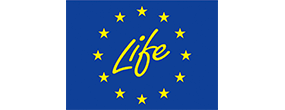Overview
Final energy consumption (FEC) in 2022 (with climatic corrections) was only 17% higher than in 2000 despite significant economic growth over the same period. The average annual growth of final energy consumption from 2000 to 2022 is 0.7%.
Figure 1: Final energy consumption by sector (with climatic corrections)
Source: ODYSSEETotal variation of FEC by sectors from 2000 to 2022 can be characterized as follows:- Industry - substantial decrease (- 22%)- Transport – high growth of 80%- Residential - only 4% growth- Services – the highest growth from all sectors with 110%- Agriculture - highest reduction (-39%).
The variation of shares in total FEC of sectors from 2000 to 2022 is as follows:- Transport - increase from 23% to 35% (biggest energy consumer from 2009)- Industry- decrease from 41% to 27% (no longer sector with maximal FEC) - Residential - decrease from 25% to 22%- Services - increase from 8% to 14%- Agriculture - twofold reduction 4% to 2%.
Figure 2: Technical Energy Efficiency Index
Source: ODYSSEETechnical energy efficiency as measured by technical index ODEX improved by 33% from 2000 to 2022 or 1.8%/year on average. The highest progress was registered in industry (2.7%/year or 55% in total), followed by the transport (1%/year, 20%), residential (0.7%/year, 15%) and in services (4%).
Figure 3: Energy savings by sector
Source: OdysseeTotal energy savings from 2000 to 2022 are 3.74 Mtoe, with most of them registered in : industry (2.71 Mtoe or 73% of the total). Other savings are as follows: transport 0.54 Mtoe, households 0.47 Mtoe and services 0.03 Mtoe.
Figure 4: Main drivers of the total energy supply variation
Source: OdysseeThe variation of the total energy supply (+ 0.7 Mtoe) from 2000 to 2022 is explained by an increase of the final energy consumption for energy uses (+1.4 Mtoe) and of the net consumption of the power sector (+0.4 Mtoe), which were partly offset by a reduction in the consumption for the other energy transformations (-0.5 Mtoe) and non-energy uses (-0.6 Mtoe).
Figure 5: Main drivers of the final energy consumption variation
Source: OdysseeThe increase in the final energy consumption from 2000 to 2022 (+ 1.37 Mtoe) was driven by the growth in activity(+5.01 Mtoe) , linked to a rise in value added in industry, services and agriculture, in traffic in transport, in the number of dwellings and appliances and in the size of dwellings, which was partly offset by energy savings (- 3.74 Mtoe), structural effects (-0.26 Mtoe) and climatic effect (-0.14 Mtoe). Structural effects combine structural changes in industry , which contributed to reduce consumption (-0.91 Mtoe) , and modal shift in transport, which increased consumption (+0.65 Mtoe). Other effects (+ 0.5 Mtoe) include various effects, such as behaviours for households, value of product in industry, labour productivity in services and “negative” savings due to inefficient operations in industry and transport.
Table 1: Sample of cross-cutting measures
| Measures | NECP measures | Description | Expected savings, impact evaluation | More information available |
|---|---|---|---|---|
| National Energy Efficiency Cumulative Target 2021-2030 (Национална кумулативна цел за енергийни спестявания 2021-2030) | Yes | Legislative measure - An energy savings obligation scheme and alternative measures, is set up in order to help reach the national energy efficiency target, which should ensure achieving of a total cumulative target of energy savings in final energy consumption for the period from 1 January 2021 to 31 December 2030 | 35.00 TJ | Link |
| Long-term National Strategy to Support the Renovation of the National Building Stock of Residential and Non-residential Buildings by 2050 | Yes | Дългосрочна национална стратегия за подпомагане обновяването на националния сграден фонд от жилищни и нежилищни сгради до 2050 г. National LTRS has been developed according to art. 2EPBD and it is the main National strategic document for the renovation of the building stock, incl. roadmap, strategic objectives, policies and measures, investments, financial instruments for building renovation, etc. | 10.50 TJ | Link |
| Energy Efficiency Obligation Scheme (Схема за задължения за енергийна ефективност) | Yes | Legislative measure - An energy savings obligation scheme is set in the Energy Efficiency Act | 5.62 TJ | Link |
Buildings
Final consumption variation of buildings (normal climate) increased from 2.8 Mtoe in 2000 to 3.6 Mtoe in 2022 (29%) or 1.2% average annual growth over the period.
Figure 6: Final energy consumption in buildings (with climatic corrections)
Source: OdysseeTotal growth of FEC in households was quite low (only 4%) , from 2.11 Mtoe in 2000 to 2.18 Mtoe in 2022 . The FEC growth of services was the biggest of all sectors, from 0.66 Mtoe in 2000 to 1.38 Mtoe in 2022, or 110%.
Figure 7: Energy consumption by end-use of households (with climatic corrections)
Source: OdysseeFrom 2000 to 2022 energy consumption for space heating in the residential sector remains practically unchanged (decrease from 1.09 to 1.06 Mtoe). Consumption increased for most other end-uses: for large electrical appliances by 16%, for cooking by 34%, for air conditioning by 75%; for lighting consumption decreased by 12%.
Figure 8: Energy consumption of household space heating per m2 (with climatic corrections)
Source: ODYSSEEThe variation of energy consumption of household space heating per m2 (normal climate) was substantial, from 5.87 koe/m2 in 2000 to 4.48 koe/m2 in 2022, or 24% reduction over the period, with a very rapid reduction since 2020 (-32%), due an increase in 2020 due to Covid and a sharp decrease in 2022 due to high prices.
Figure 9: Energy consumption per dwelling by end-use (except space heating)
Source: ODYSSEEThe energy consumption per dwelling for other end-uses than space heating increased significantly from 2000 to 2022 for cooking growth (+33%), air conditioning (+74%); for electrical appliances and lighting , there was a more limited growth (+11%). For water heating, there was a small reduction (-3%).
Figure 10: Electricity consumption per dwelling by end-use (with climatic corrections)
Source: OdysseeThe total electricity consumption per dwelling increased by 22% from 2000 to 2022, with the following variations by end-use (with climatic corrections):- thermal uses (+33%),electrical appliances (+15%), lighting (-12.5%) and air cooling (+74%).
Figure 11: Main drivers of the energy consumption variation in households
Source: ODYSSEEThe final consumption of residential sector increased by only 0.03 Mtoe over the period 2000-2022. The main driver to increase energy consumption are larger homes (0.58 Mtoe), with an increase of the average size of dwellings from 64 m2 to 83 m2. Energy savings reduced energy consumption by 0.47 Mtoe.
Figure 12: Main drivers of the space heating consumption variation of households
Source: OdysseeThe space heating consumption of residential sector decreased by 0.1 Mtoe, from 1.08 Mtoe to 0.981 Mtoe between 2000 and 2022. The main driver to increase are larger homes (0.3 Mtoe), while energy savings reduced energy consumption for space heating by 0.282 Mtoe.
Figure 13: Energy and electricity consumption per employee in services (with climatic corrections)
Source: ODYSSEEEnergy and electricity consumption per employee in services sector increased significantly over the period 2000-2022. In 2022, energy consumption per employee is 58% and electricity consumption per employee 25% higher than 2000 level.
Table 2: Sample of policies and measures implemented in the building sector
| Measures | NECP measures | Description | Expected savings, impact evaluation | More information available |
|---|---|---|---|---|
| Support for sustainable energy renovation of the residential building stock - NRRP (Подкрепа за устойчиво енергийно обновяване на жилищния сграден фонд - НПВУ) | No | Grant support for deep energy renovation of residential buildings under the National Recovery and Resilience Plan. | 0.09 TJ | Link |
| Financing program of standalone RES measures in single-family buildings and multifamily buildings (Програма за финансиране на единични мерки за енергия от възобновяеми източници в еднофамилни сгради и многофамилни сгради) | No | Grant support for photovoltaic systems and solar systems for domestic hot water supply under the National Recovery and Resilience Plan | 0.10 TJ | Link |
| Replacement of inefficient solid fuel stoves (Замяна на неефективни отоплителни уреди) | No | Procedures for replacement of inefficient heating appliances by directly providing a grant | 0.30 TJ | Link |
Transport
The transport sector energy consumption increased by 93% (or 3%/year) from 1.76 Mtoe in 2000 to 3.39 Mtoe in 2022.
Figure 14: Transport energy consumption by mode
Source: ODYSSEEThe share of the road transport in the transport energy consumption increased by 4 percentage points (pp), from 94% in 2000 to 98% in 2022 and the share of the rail transport decreased by 2.7 pp, from 4% to 1.3% over the same period. From 2000 to 2022 the energy consumption of road transport increased by 101%, while that of rail transport decreased by 42%.
Figure 15: Modal split of inland passenger traffic
Source: ODYSSEEThe share of inland passenger traffic by road increased by 5 pp, to 96% in 2022 from 91% in 2000. The share of rail passenger traffic has been reduced more than 2 times, to 4% in 2022 from 8.6% in 2000.
Figure 16: Modal split of inland freight traffic
Source: ODYSSEEThe share of inland freight traffic by road increased by 14 pp to 59.5% in 2022 from 45.6% in 2000. The share of rail freight traffic has been reduced more than 2 times, from 51.5% in 2000 to 23.5% in 2022.
Figure 17: Energy consumption of cars per passenger-km
Source: ODYSSEEEnergy consumption of cars per passenger-km decreased by 11% from 2000 to 2022 (-0.5%/year).
Figure 18: Main drivers of the energy consumption variation in transport
Source: ODYSSEETransport energy consumption increased by 1.55 Mtoe (78%) from 2000 to 2022. Energy savings contributed to decrease energy consumption by 0.54 Mtoe. On the opposite, the growth in passengers and goods traffic (+1.12 Mtoe) and the modal shift effect (+0.65 Mtoe), more than offset the energy savings effect and explain the observed significant increase of the consumption.
Table 3: Sample of policies and measures implemented in the transport sector
| Measures | NECP measures | Description | Expected savings, impact evaluation | More information available |
|---|---|---|---|---|
| "Green mobility" - support of sustainable urban mobility through measures for energy-efficient transport systems („Зелена мобилност“ - подкрепа на устойчивата градска мобилност чрез мерки за енергийно ефективни транспортни системи) | No | Project under Bulgarian Recovery and Resilience Plan - grant support for sustainable urban mobility through measures to develop ecological, safe, functional and energy-efficient transport systems. | 0.43 TJ | Link |
| Expansion of the metro network in Sofia (Разширяване на мрежата на метрото в София_ | No | Project under Bulgarian Recovery and Resilience Plan - Ensuring sustainable transport connectivity through the construction of Stage 3 of Line 3 of the Sofia metro (3 km) | 0.43 TJ | Link |
| Introduction of Intelligent Transport Systems on the National Road Network and in the Urban Environment (Въвеждане на интелигентни транспортни системи ) | Yes | The projects for the introduction of intelligent transport systems of Operational Program Transport 2014-2020 are laid down in Priority axis 4 "Innovations in management and services - implementation of modernized infrastructure for traffic management, improvement of safety and security of transport" | 0.43 TJ | Link |
Industry
Energy consumption of industry decreased by 22% over the period 2000-2022, including 81% reduced consumption of the steel industry.
Figure 19: Final energy consumption of industry by branch
Source: ODYSSEEThe largest consumer branch of industry in 2000 was the chemical industry with 39% share of the total sector energy consumption. This share decreased to 28% in 2022 but the branch is still the largest industrial energy consumer. Second largest industrial consumer is the branch of non-metallic with a 21% share in 2022 up from 14% in 2000.
.
Figure 20: Unit consumption of paper (toe/t)
Source: ODYSSEEUnit consumption of paper decreased in 2022 by 28% since 2000 or an average rate of 1.5% annually.
Figure 21: Main drivers of the energy consumption variation in industry
Source: ODYSSEEEnergy consumption of industry decreased by 0.78 Mtoe, from 3.49 Mtoe in 2000 to 2.71 Mtoe in 2022. Energy savings (-2.71 Mtoe) and structural effects (-0.91 Mtoe), towards less energy intensive branches, contributed to this largest decrease of sector energy consumption. On the opposite the growth in activity (expressed with production indexes) partially offset these effects (+2.52 Mtoe).
Table 4: Sample of policies and measures implemented in the industry sector
| Measures | NECP measures | Description | Expected savings, impact evaluation | More information available |
|---|---|---|---|---|
| Scheme to support green hydrogen and biogas production projects (Схема за подпомагане на проекти за производство на зелен водород и биогаз) | No | Project under Bulgarian Recovery and Resilience Plan - providing support for the development of projects enabling the introduction of green hydrogen and biogas with application in industrial production processes. | 0.12 TJ | Link |
| Program "Competitiveness and innovation in enterprises" 2021-2027 (Програма „Конкурентоспособност и иновации в предприятията“ 2021-2027) | No | The Program is directly aimed at achieving intelligent and sustainable growth of the Bulgarian economy, as well as the implementation of industrial and digital transformation - supporting SMEs in order to achieve better energy and resource efficiency and strengthen the transition to a green economy. Two instruments in the Program are directly aimed to EE: Debt instruments for circular economy, EE and RES in combination with grants. | 0.59 TJ | Link |
| Construction of new RES for own consumption in combination with local facilities for energy storage in enterprises (Изграждане на нови ВЕИ за собствено потребление в комбинация с локални съоръжения за съхранение на енергия в предприятията) | No | Procedure under National Resilience and Recovery Plan - Aimed at the construction of new renewable energy sources (photovoltaic systems) up to 1 MW for own consumption, combined with local energy storage facilities (batteries), which aims to encourage the transition of the private sector to eco-friendly activity. | 0.59 TJ | Link |





